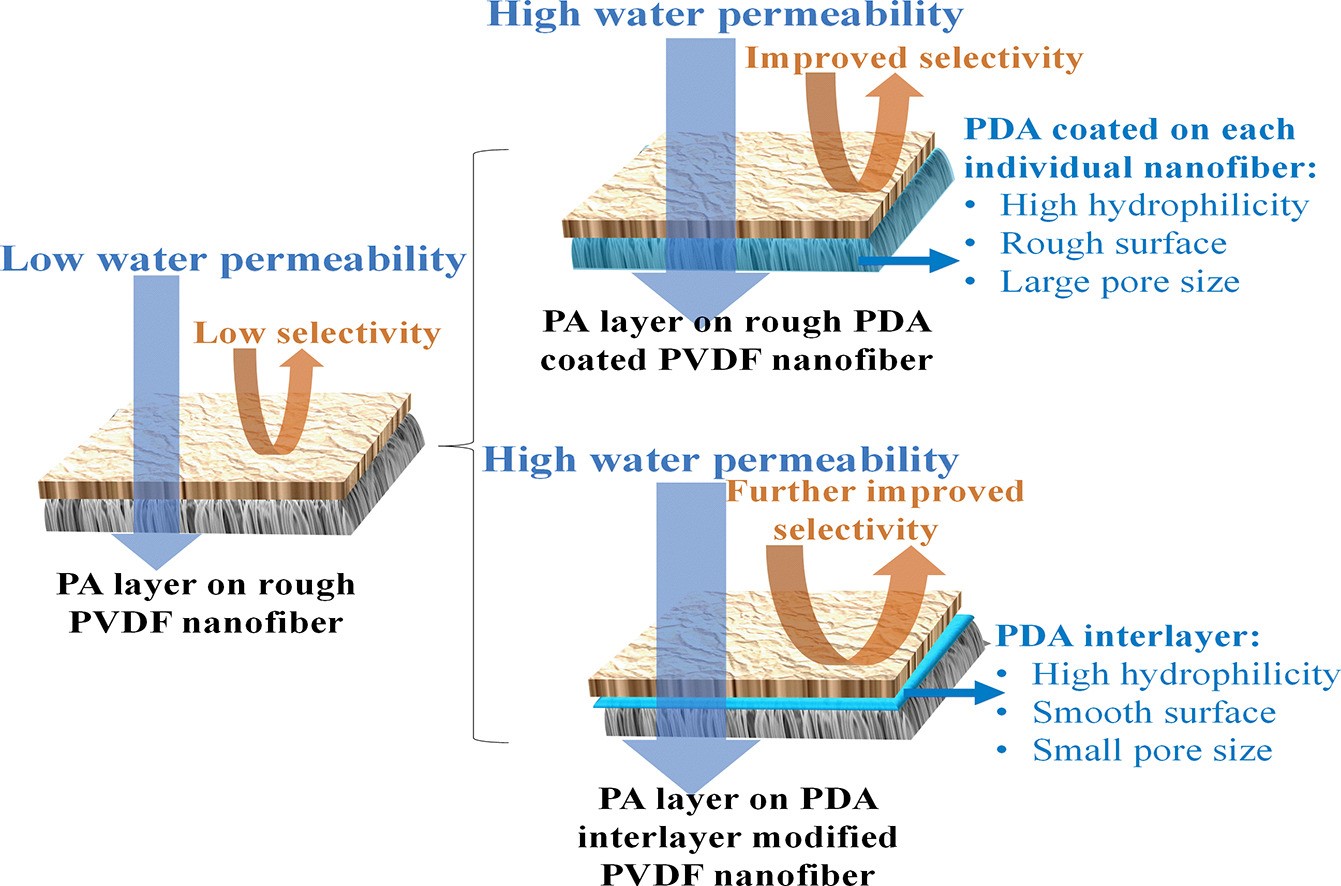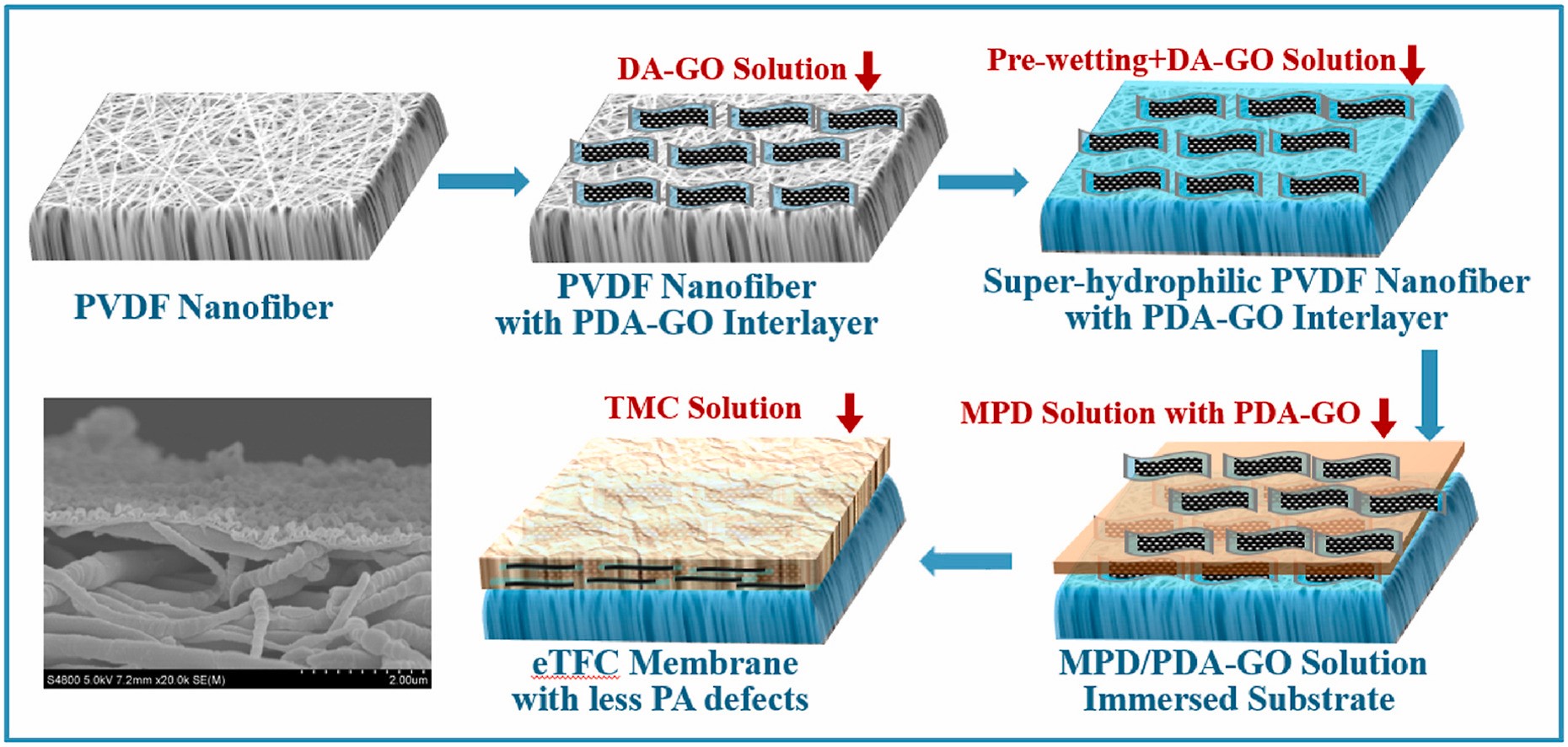High salinity wastewater is with a salinity at least of 3.5wt%. Its compositions are mainly soluble ions, such as Cl-、SO2-、Na+、Ca2+ and Mg2+, as well as heavy metal ions with varying concentrations. And desulfurization wastewater from power plants is a typical high salinity wastewater. Treatment processes of high salinity wastewater normally acquire high enerhy consumption. And there would be problems during the treating processes, such as Crystallization, scaling and secondary pollution.
Electropun thin film composite forward osmosis (eTFC-FO) is a new membrane technique, which is of advantages of high water flux, low energy consumption and low membrane fouling. The substrate of a eTFC-FO membrane, namely electrospun nanofiber, is very helpful to lower down the transport resistance inside substrate and internal concentration polarization (ICP) due to its high porosity, interconnected pore structure and controllable membrane thickness. Thus, nanofiber supported eTFC-FO membrane is of high water flux and promising to be applied in the treatment of high salinity wastewater. However, the large surface pore size is not desirable for a a selective polyamide layer of eTFC-FO, which would result in low selectivity and low stability of operation. Herein, a eTFC-FO membrane can not provide a high rejection to the ions in high salinity wastewater.
For an effective treatment of desulfurization wastewater, two novel kinds of eTFC-FO membranes have been designed and prepared in Prof. ZHENG Yu-Ming’s group in Institute of Urban Environment Chinese Academy of Sciences (IUE, CAS). And both of them had been applied in the desalination of desulfurization wastewater. For the first eTFC-FO membrane, a polydopamine (PDA) interlayer was prepared on the nanofiber substrate. PDA interlayer was found to be effective to reduce the surface pore size of nanofiber and improve sorption of the M-phenylenediamine (MPD) monomers at interlayer during the polyamide (PA) layer deposition of eTFC-FO, which would be favorable to form a highly selective, lowly defective and thin PA layer. As a result, PDA interlayer modified eTFC-FO showed a quite high water flux (~43.0 LMH) and high rejections to all studied ions (~97.0%) at FO mode during desalination of desulfurization wastewater. However, the PRO performance was limited due to the rest hydrophobic nanofiber substrate and consequent heavy fouling. To alleviate the fouling at PRO mode, another eTFC-FO membrane was proposed and prepared. For this eTFC-FO membrane, super-hydrophilic nanofiber substrate was applied to improve the anti-fouling performance at PRO mode. Meanwhile, the other strategy was applied for the super-hydrophilic nanofiber supported eTFC-FO to alleviate PA defects and enhance selectivity, which was a combined modification by polyamide-graphene oxide (PDA-GO) in both interlayer and PA layer of eTFC-FO. The results showed that the prepared eTFC-FO can provide stable performance for desalination of desulfurization wastewater at both FO and PRO modes. And its PRO performance was even higher, which was with a high water flux of ~64.0 LMH and a rejection of ~98.0% to all studied ions.
Two articles have been respectively published on above two eTFC-FO membranes on Desalination and Journal of membrane science by Prof. ZHENG Yu-Ming’s group in IUE, CAS, respectively titled as High performance electrospun thin-film composite forward osmosis membrane by tailoring polyamide active layer with polydopamine interlayer for desulfurization wastewater desalination and Super-hydrophilic nanofiber substrate supported forward osmosis membrane with less polyamide layer defects by polydopamine-graphene oxide modification for high salinity desulfurization wastewater desalination. Both researches were done by Ph.D candidates of LI Bing and KE Xiaoxue. And Prof. Zheng is the only corresponding author.

Fig.1 eTFC-FO membrane modified by a PDA interlayer and its advantages in structure.

Fig.2 eTFC-FO membrane modified by PDA-GO in both interlayer PA layer and its preparation process.